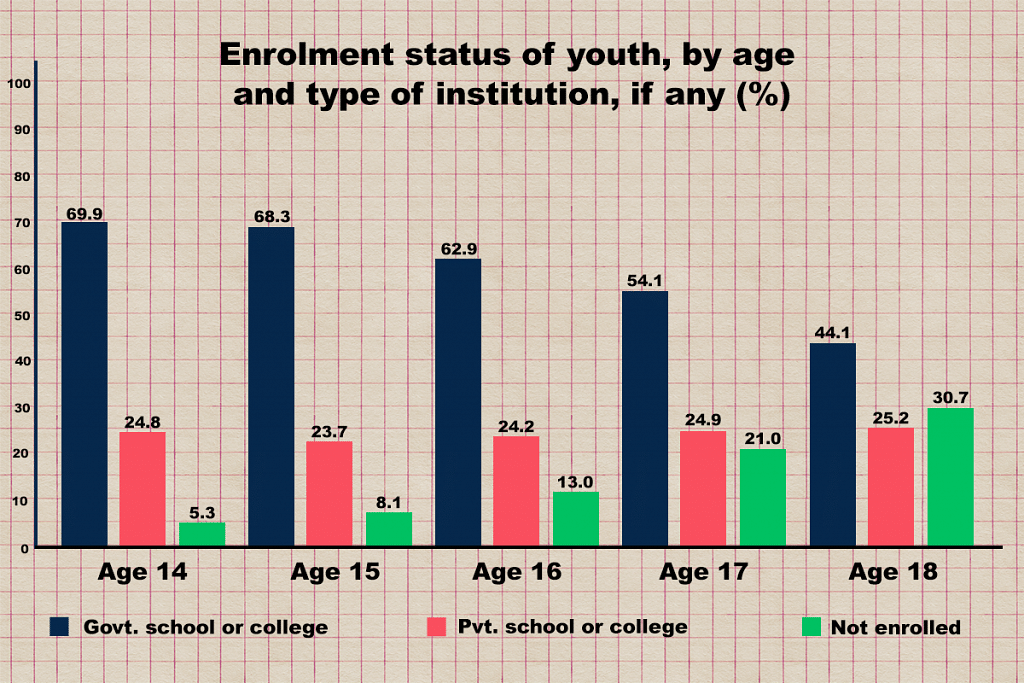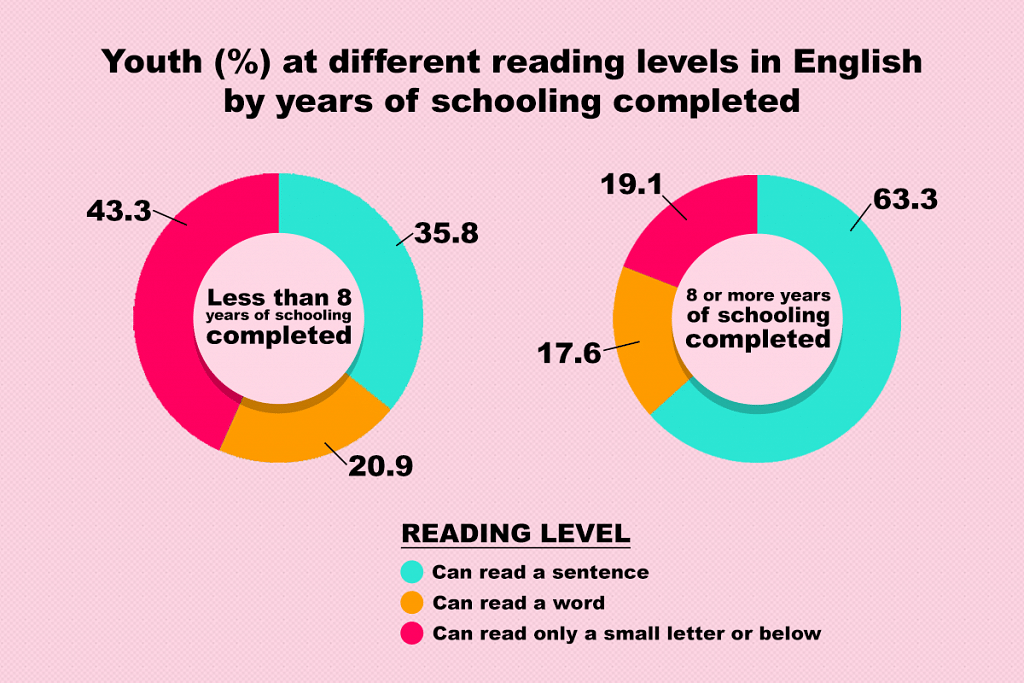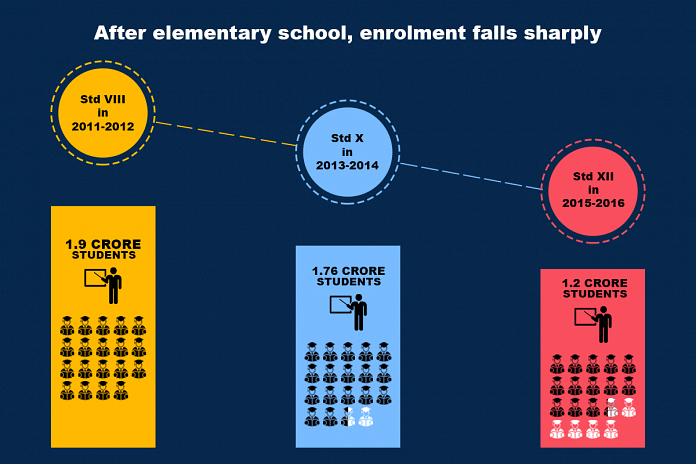A study of over 28,000 youths across the country reveals what youth aspire for, how connected they are and that girls still face many disadvantages.
New Delhi: A study of India’s youth in the 14-18 age group shows that while a majority aspire for ‘any government job’, the dropout rate remains high and access to the Internet and mobile phones remains a problem, particularly for girls.
The Annual Status of Education Report (ASER) released by NGO Pratham for 2017 surveyed 28,323 youth in the 14-18 age group across 28 years. Its findings are divided into four domains of activity, ability, awareness and aspirations.
Here are the key findings
What India’s youth aspire to do
The report says there is gender disparity in the aspirations of the youth.
“Professional aspirations are clearly gendered, with males aiming to join the army or police or becoming engineers, and females showing preference for teaching or nursing careers,” the report says.
The survey also reveals that “only 1.2 per cent of rural youth aspire to work in the agriculture sector”. It notes that “few youth aspired to the same profession as their parents”.
Both boys and girls, when asked about their preference for a future job, said “any government job”.
How many youth are in India’s education system
The report says that there is a need to first incorporate the youth in the formal education system as only 86 per cent of youth in the 14-18 age group happen to be within the formal education system.
The report says the gap between the number of male and female students in the formal education system increases with age.
In 2017, this difference spiked with 32 per cent female students not being enrolled in the education system at the age of 18. The report says that only 28 per cent males are not enrolled at the same age, despite there being hardly any difference between the two genders at age 14.
The dropout rates also increase with age, the report says. While at the age of 14, the percentage of youth not enrolled is 5 per cent, it rises to 30 per cent for those aged 18.
The report says that about 5 per cent of youth have enrolled for vocational training or other courses.

The report confirms that most youth are engaged in agriculture. Within the working youth, 79 per cent are still work in the agrarian sector, and almost all of them on their own family’s land holdings.
How connected are India’s youth?
The report says the youth were tested on how they access media, financial institutions and the digital world. The data reveals the disparity between boys and girls, with the report noting that “significant gender differences are visible”.
The report says that while 73 per cent youngsters use a mobile phone, males have more access to mobile phones. While only 12 per cent of males surveyed had never used a mobile phone, this number for females is much higher at 22 per cent.
The report says that the use of Internet and computers is much lower for the youth. While 28 per cent have used the Internet, and 26 per cent used computers during the week they were surveyed, 59 per cent said they have never used a computer and 64 per cent have never accessed the Internet.
The gender divide is clear here as well. While 49 per cent of the males surveyed say they have never used the Internet, the number is close to 76 per cent for females.
India’s youth can read, but struggle with math
The report says that India still has to work on improving the reading ability of its population.
About 25 per cent of youth in the 14-18 age group still cannot read basic text fluently in their own language. The report says 53 per cent of all 14-year-olds of those sampled were able to read English sentences. For 18-year-olds, this figure is closer to 60 per cent.
Reading ability in regional languages and English show slight improvement with age, but that does not apply to arithmetic. The report says more than half struggled with division problems.

Life skills of India’s youth
Of the surveyed youth, 76 per cent in the 14-18 age group could count money correctly, while 56 per cent could add weights correctly in kilograms. But less than 60 per cent could tell time correctly, the report says.
The report says 86 per cent of the surveyed youth could calculate the length of objects correctly. But less than 40 per cent could solve mathematical problems involving time.
Practical life skills of India’s youth
The youth were also tested on the practical life skills like reading and understanding written instructions. Of those who had completed 8 years of schooling, only 58 per cent could read and understand instructions on an ORS packet, the report says.
Around 64 per cent could complete simple tasks involving managing budgets.
About 86 per cent could recognise India on a map, but only 42 per cent could spot the state they live in correctly. The report says 64 per cent could name the capital of the country correctly.



